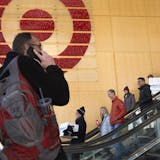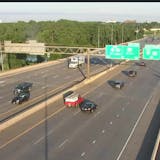Less than 30 minutes into his crusade, Mikah Meyer was reminded of why he took it up.
Several men in a passing vehicle shouted something vile at him.
A day later Meyer, who is gay, was reminded again. He met a manager at a Dairy Queen in Dawson, in western Minnesota, and shared his story: He was traveling through the heart of the state on foot — his "Run Across Minnesota" — hoping to make the outdoors a little kinder and more welcoming for the next lesbian, gay, bisexual or transgender person to pass through.
The manager, too, opened up to Meyer. She spoke of her daughter with special needs who'd heard taunts at times while she shared a playground or was on the receiving end of odd looks. Their worlds were far apart, but their stories connected.
"It was this really beautiful moment that in a country that has felt divided for so long, this person who probably has very different politic views [was] completely able to relate to what I was trying to share," Meyer said.
His dual experiences last month — the homophobia, the understanding — were top of mind this week as Meyer put in his final miles. His 200-plus-mile run began Sept. 4 at the South Dakota border, west of Dawson. He'll finish it Sunday afternoon at the historic Lift Bridge in Stillwater.
Gay outdoorsman are two words you don't read together, but Meyer, 34, gave them a new profile with a highly publicized adventure that concluded in April 2019. Over three years and 200,000 miles, Meyer became the first person known to have traveled in a single trip to all 419 National Park Service sites in America. He's good at telling his story, too. He's written for Outside magazine, Huffington Post and other national publications, keeps a busy public speaking calendar and regularly updates his 67,000 Instagram followers anticipating another #adventurepride post.
His national parks trip was, in large part, an homage to his late father, with whom family road trips from their home in Nebraska were a way of life. His father succumbed to cancer in 2005. Some of those travels with his dad involved trips to Minnesota. His father's first call as a Lutheran pastor was in Crystal, Minn., and they'd return in later years. Interns from Luther Seminary were a mainstay for years at his father's campus ministry at the University of Nebraska in Lincoln.



